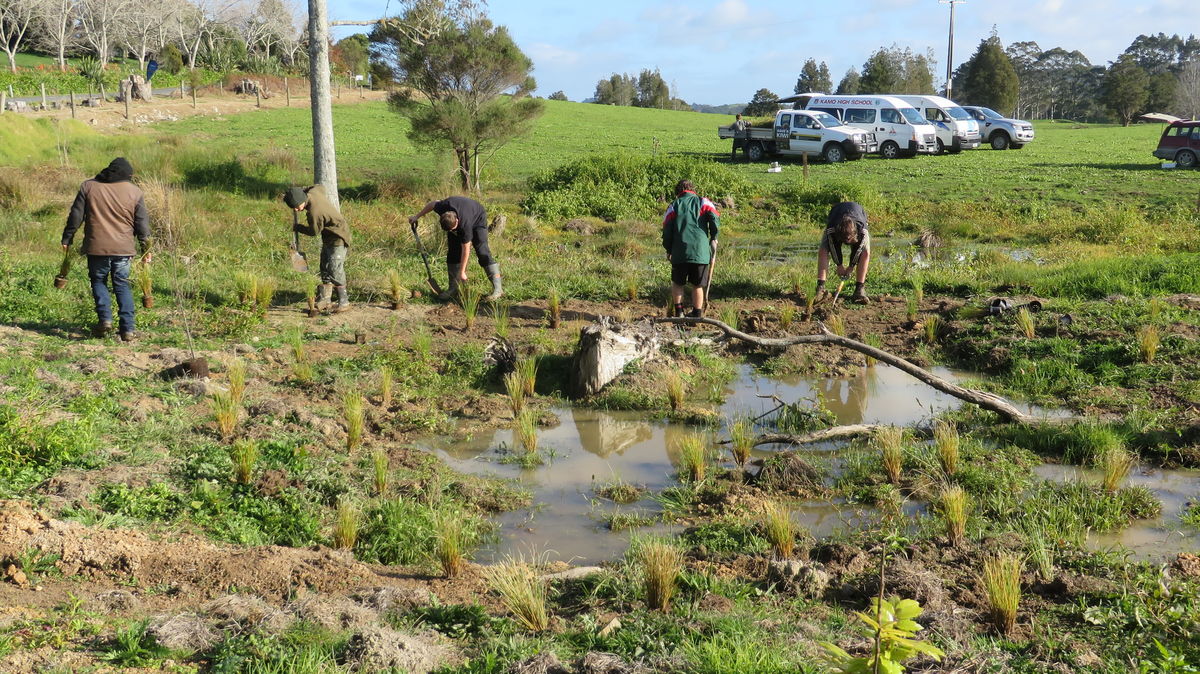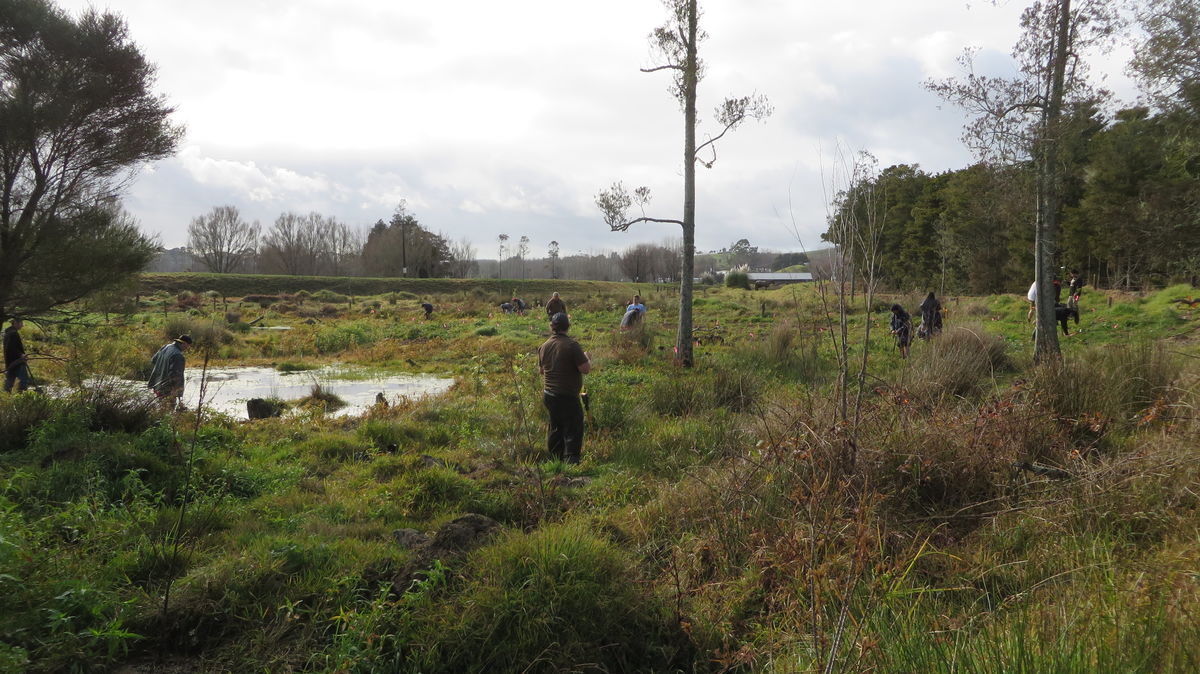
Low cost wetlands
What was the project?
In 2015 Living Water, Northland Regional Council and Northland Fish and Game held a one-day workshop on how to construct a low-cost wetland. The workshop covered the benefits of wetlands, practical advice on selecting the best type of wetland, and information on construction regulations followed by an on-farm demonstration of construction in action.
Who could use this information?
Landowners, farm managers, land advisors, community groups


Step by step guide to building a low cost wetland
Watch and learn how to build a low cost underground dam wetland in this step by step guide.
Why are wetlands important?
It’s estimated that 90% of New Zealand’s wetlands have been drained so it’s really important we protect and enhance wetlands that remain; and in some cases, create new wetlands in suitable areas on-farm.
Wetlands can provide the following benefits:
- Improve water quality and water supply to surrounding land
- Erosion control
- Flood damage reduction
- Habitat for threatened native fish, birds, insects and plants
- Utilise areas of land generally not usable for farming purposes
Where should I create a wetland on my land?
Protecting and enhancing existing wetlands should be the first priority. However, if you have an area that’s wet or boggy, it’s likely a wetland existed there before drainage so could be a good place to create a wetland.
Be sure to consult an expert as wetlands that are too small or in the wrong place can generate contaminants instead of attenuating them.
Check with your local council about any regulations or funding that may be available.
What did Living Water learn from constructing low-cost wetlands?
- The planning stage is important and always check with your local council before starting any work
- Creating a wetland for a habitat is very different from constructing a wetland for water quality treatment purposes. Know your reason for construction and do the relevant research before you start
- Different regions will require different approaches to construction based on soil type, water flow, climate etc as well as different plant species
- Engaging with a professional in the early stages could save a lot of time and money
Guides for wetland enhancement or construction
- NIWA and DairyNZ have developed guides and technical information to construct wetlands for treating contaminants based on a review of international and national studies
- DairyNZ provides information on keeping stock out of existing wetlands
- Department of Conservation provides information on wetlands, plants and how to restore and protect existing wetlands
- Landcare Trust provides information about managing wetlands as farm assets as well as information about protecting and enhancing existing wetlands
Protecting and enhancing existing wetlands should be the first priority
Creating a wetland for a habitat is very different from constructing a wetland for water quality
